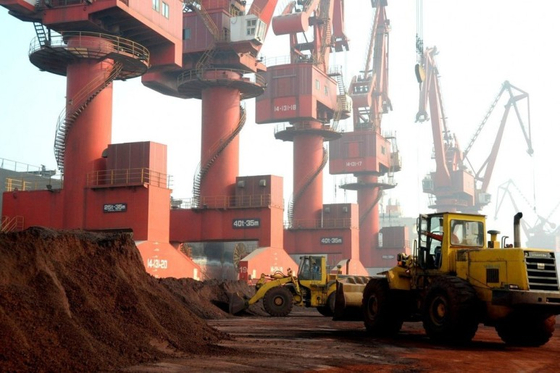China recently discovered deep-sea mineral deposits. According to the China Maritime Association, China recently discovered rare earth-rich deposits in the South and South Pacific Oceans.
According to a paper recently published in the Chinese Journal of Mineralogy and Geochemistry, the researchers conducted a global undersea survey over a 10-year period from 2011 to 2020, and found potential high-yielding deposits of essential industrial minerals from nickel to rare earths.

Ⓒ Reuters
Studies have shown that some sediments have been found in the South China Sea, and most in the Indian Ocean, Atlantic Ocean and Pacific Ocean, far from China. In a deep-sea basin of approximately 2.6 million square kilometers, the ocean geological survey and comprehensive environmental survey were conducted to collect abundant sediment samples, seawater samples, and strata sections.
Undersea minerals have a lot of reserves and high value, but the difficulty of mining is very high, so that proper commercial mining has not been carried out worldwide. This is because the seafloor topography is complex, pressure is high, and there are complex marine environmental conditions such as waves, ocean currents, and implosion even without light.

Ⓒchina daily
China has taken its first steps. “The intensity of China’s undersea exploration activities surpassed those of other countries,” said Szepa, a researcher at the 1st Institute of Marine Studies of the Ministry of Natural Resources.
China’s rapid economic development over the past few decades has brought enormous demand for imported resources such as high-quality iron ore from Australia and Brazil. However, as the China-Australia conflict deepens and iron ore prices continue to skyrocket, dissatisfaction from China, which is highly dependent on imports for Australian iron ore, is growing.
China is now turning to untapped resources under the sea. China is working on an ambitious project for deep sea exploration.

Ship cranes are starting deep sea testing. Ⓒchina daily
In November, a manned submersible funder, developed by China, succeeded in diving up to 10,909 meters. It is also developing robot-operated deep-sea bases and unmanned undersea bases. With the help of a floating nuclear power plant, the technology is expected to draw natural resources from thousands of meters below the sea and open the way for commercial use.

China’s manned submarine funder ⓒShinhwa Communications
Researchers at the University of Tokyo, Japan, estimate that the amount of rare earth on the sea floor is 1,000 times more than that on land. Deposits of metallic nickel, which can improve the performance of electric vehicle batteries, also tend to be found next to submarine mountains rather than peaks or basins.

China’s own oil drilling facility’Offshore Petroleum 981′ operating in the South China Sea. ⒸThe Wall Street Journal
China’s deep-sea mineral investigation was approved by the United Nations International Maritime Affairs Authority. The approval gives China access to more mineral exploration areas than other countries. According to the China Undersea Research Institute, China’s deep-sea mining activities in the future will be concentrated in the South Atlantic, the northwest and southwest of the Indian Ocean, the central Pacific and the South China Sea.
Already in the region, China has found a significant number of chimneys pumping mineral-rich materials. Studies have shown that some deposits contain ore of sufficient quality to be commercially developed for over 20 years.

In 2018, members of the China-Pakistan Science Exploration Team are sending a submarine seismic system down into the sea in the North Indian Ocean. ⒸShinhwa Communication
The world’s attention is drawing on China, which accelerates technological innovation by enhancing exploration technology from space to deep sea to the level of a powerhouse. However, the waters where China intends to build large-scale mining facilities is a highly controversial area.
The South China Sea, a treasure trove of resources, is a region where neighboring countries are in sharp conflict over resource development.
India has already raised concerns about China’s activities in the Indian Ocean, and is on the verge of dispatching coast guard ships. The United States has even sent reconnaissance planes to monitor the mapping and planting of Chinese research vessels on the seabed near Guam.
China Lab = Kim Eun-soo, editor

China Lab
